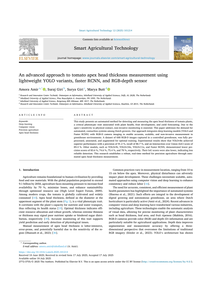The security of online assessments is a major concern due to widespread cheating. One common form of cheating is impersonation, where students invite unauthorized persons to take assessments on their behalf. Several techniques exist to handle impersonation. Some researchers recommend use of integrity policy, but communicating the policy effectively to the students is a challenge. Others propose authentication methods like, password and fingerprint; they offer initial authentication but are vulnerable thereafter. Face recognition offers post-login authentication but necessitates additional hardware. Keystroke Dynamics (KD) has been used to provide post-login authentication without any additional hardware, but its use is limited to subjective assessment. In this work, we address impersonation in assessments with Multiple Choice Questions (MCQ). Our approach combines two key strategies: reinforcement of integrity policy for prevention, and keystroke-based random authentication for detection of impersonation. To the best of our knowledge, it is the first attempt to use keystroke dynamics for post-login authentication in the context of MCQ. We improve an online quiz tool for the data collection suited to our needs and use feature engineering to address the challenge of high-dimensional keystroke datasets. Using machine learning classifiers, we identify the best-performing model for authenticating the students. The results indicate that the highest accuracy (83%) is achieved by the Isolation Forest classifier. Furthermore, to validate the results, the approach is applied to Carnegie Mellon University (CMU) benchmark dataset, thereby achieving an improved accuracy of 94%. Though we also used mouse dynamics for authentication, but its subpar performance leads us to not consider it for our approach.
DOCUMENT

This study presents an automated method for detecting and measuring the apex head thickness of tomato plants, a critical phenotypic trait associated with plant health, fruit development, and yield forecasting. Due to the apex's sensitivity to physical contact, non-invasive monitoring is essential. This paper addresses the demand for automated, contactless systems among Dutch growers. Our approach integrates deep learning models (YOLO and Faster RCNN) with RGB-D camera imaging to enable accurate, scalable, and non-invasive measurement in greenhouse environments. A dataset of 600 RGB-D images captured in a controlled greenhouse, was fully preprocessed, annotated, and augmented for optimal training. Experimental results show that YOLOv8n achieved superior performance with a precision of 91.2 %, recall of 86.7 %, and an Intersection over Union (IoU) score of 89.4 %. Other models, such as YOLOv9t, YOLOv10n, YOLOv11n, and Faster RCNN, demonstrated lower precision scores of 83.6 %, 74.6 %, 75.4 %, and 78 %, respectively. Their IoU scores were also lower, indicating less reliable detection. This research establishes a robust, real-time method for precision agriculture through automated apex head thickness measurement.
DOCUMENT

Learning mathematical thinking and reasoning is a main goal in mathematical education. Instructional tasks have an important role in fostering this learning. We introduce a learning sequence to approach the topic of integrals in secondary education to support students mathematical reasoning while participating in collaborative dialogue about the integral-as-accumulation-function. This is based on the notion of accumulation in general and the notion of accumulative distance function in particular. Through a case-study methodology we investigate how this approach elicits 11th grade students’ mathematical thinking and reasoning. The results show that the integral-as-accumulation-function has potential, since the notions of accumulation and accumulative function can provide a strong intuition for mathematical reasoning and engage students in mathematical dialogue. Implications of these results for task design and further research are discussed.
DOCUMENT
